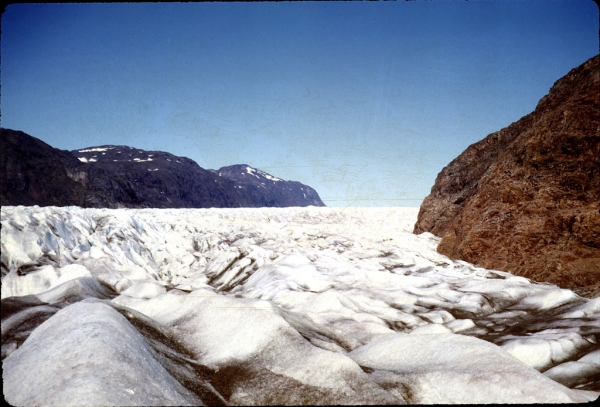It's Not Just the Polar Bears that Need the Ice Caps to Survive
Video
alt="" e2 design II — Architecture 2030 excerptColdness as we know it may begin to change, no matter if global warming is a "natural fluctuation or an effect of industrial society's releasing heat-trapping gasses into the atmosphere," as reported in John Noble Wilford's New York Times article Ages Old Polar Icecap is Melting, Scientists Find, written nearly ten years ago. Scientists have proven the ice cap is melting in the summer at a greater pace and more aggressively than at any other recorded time in history.
 Tip of Greenland's Ice Cap as seen in 2007.
LandVike
Tip of Greenland's Ice Cap as seen in 2007.
LandVike
Ed Mazria's Architecture 2030 initiative is focused on inspiring the industrial society to cut back on carbon emissions in an effort to stop the rapid pace of polar ice cap loss. Mazria seeks to motivate society by explaining that if the ice caps melt, we will experience great disaster as ocean waters take over large amounts of our coastal land masses.
Architecture 2030 states this about the current trend of the polar ice cap melting phenomenon: "Scientists are now forewarning that, at approximately 450 ppm CO2 in the atmosphere, we will trigger potentially irreversible glacial melt and sea level rise 'out of humanity’s control'.” Read More.
In the U.S., what coastal areas will be lost?
Well, let's put it this way... according to Mazria, we will experience effects like that of Katrina all around our coastal areas along the eastern and western U.S. Check out Mazria's interactive maps that show the population visually what areas would be under water.
Having heard Mazria speak in person, he did not appear to be a fanatic at all. He claims to not associate himself with any political party, either. He believes that he can use his training as an architect who can think visually to help bring scientific data down onto a level playing ground, so that even children can understand that if the ice caps do completely melt, we will be losing much more than the beauty of the arctic as we know it today.

Stephanie Aurora Lewis
Stephanie, an NCARB registered architect and LEED AP, draws upon her studies in architectural history and theory from Sarah Lawrence College and her master’s degree in architecture from The Ohio State University. Providing copy for publications and performing marketing work for the construction industry, Stephanie works as an independent freelancer from Columbus, Ohio.
Website: greengaloredesigner.blogspot.com/
